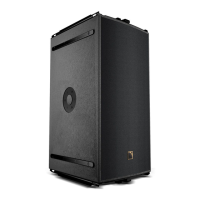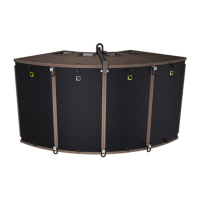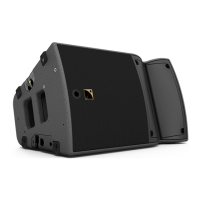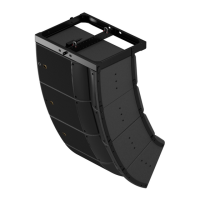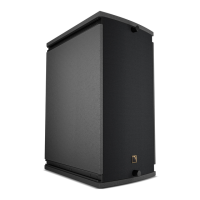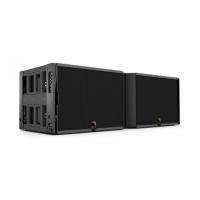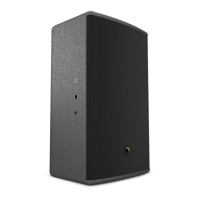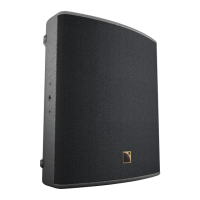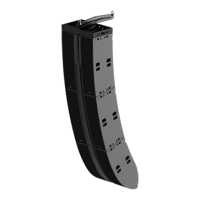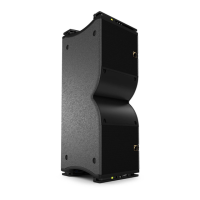L-ACOUSTICS ARCS Manual V2.0 2/13/2003 19
3.1 GENERAL DESCRIPTION OF ARCS PRESETS
The selection of one preset over another depends on many parameters including the array
configuration, musical program and personal taste of the sound engineer. In general terms, ''LO''
presets are the "smoothest" while ''HI'' presets are "brighter" (LO and HI refer to differences in the
amount of HF shelving equalization applied to the ARCS high frequency section).
3W presets are provided for use of ARCS with either SB218 or dV-SUB subwoofers. The subwoofer
channel is low pass filtered at 80 Hz and the ARCS low channel is high pass filtered at 80 Hz. Presets
are optimized for a standard 2:1 cabinet ratio of ARCS : SB218 or dV-SUB (for example, 2:1, 4:2, 8:4)
and as a starting point, output channel gains are: sub +3, low 0, high -8.
Preset names and descriptions for BSS 334, 336, 366 and XTA 224, 226 processors are given below.
Full details of channel assignments and user adjustable parameters are provided in the Preset
Description sheets that are distributed with the preset PCMCIA cards or with the preset library files
when downloaded from www.l-acoustics.com
.
3.2 ARCS PRESET POLICY
ARCS presets are intended to be used as a reference for all ARCS users and according to L-
ACOUSTICS company policy, key parameters are software-protected and preset data is not
communicated in order to preserve quality control, confidentiality and to maintain the integrity of L-
ACOUSTICS system presets as a consistent reference.
A lot of engineering and real world testing goes into determining optimum presets – detailed polar
measurements and weighted spatial averaging are used to determine component equalization,
crossover points and crossover filter slopes, for example. As a result, ARCS presets give the user an
optimum starting point – system tuning should be done using output gain attenuation, accurate
subwoofer time alignment and system equalization – not by altering crossover presets for the
following reason:
Without proper instrumentation and spatial averaging, adjustments made at one location (e.g. the mix
position) are not optimum at all other locations within the defined coverage pattern of the system.
When made by ear, such adjustments are often misguided – the user may be in a local room mode
(low frequency pressure maximum or minimum) and/or may be hearing a cancellation or addition due
to crossover misalignment that sounds good at that specific location but what about all others?
Meanwhile, the same result could have been achieved while preserving the power response of the
system (and satisfaction of WST criteria) by using the correct crossover preset and a simple
equalization cut or correct time alignment of subwoofers …
The bottom line is that making sure ARCS is used properly is in everyone’s best interest and it is up to
the sound engineer operating the system to maintain quality control standards. Quality control starts
with good sound design, proper array design, accurate installation, correct preset selection and a solid
methodology for system tuning. Restricting access to presets is in no way meant to restrict the
creative process – on the contrary, the overall systems approach is intended to enhance it by ensuring
quality control and repeatability.
In practice, presets are distributed to end users via PCMCIA Card (except for BSS Minidrive or
Soundweb). Presets and updates are available directly from L-ACOUSTICS headquarters in France, L-
ACOUSTICS US, L-ACOUSTICS UK or your local distributor. Preset libraries and upgrades can also
be downloaded from www.l-acoustics.com
.
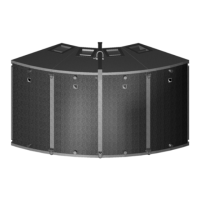
